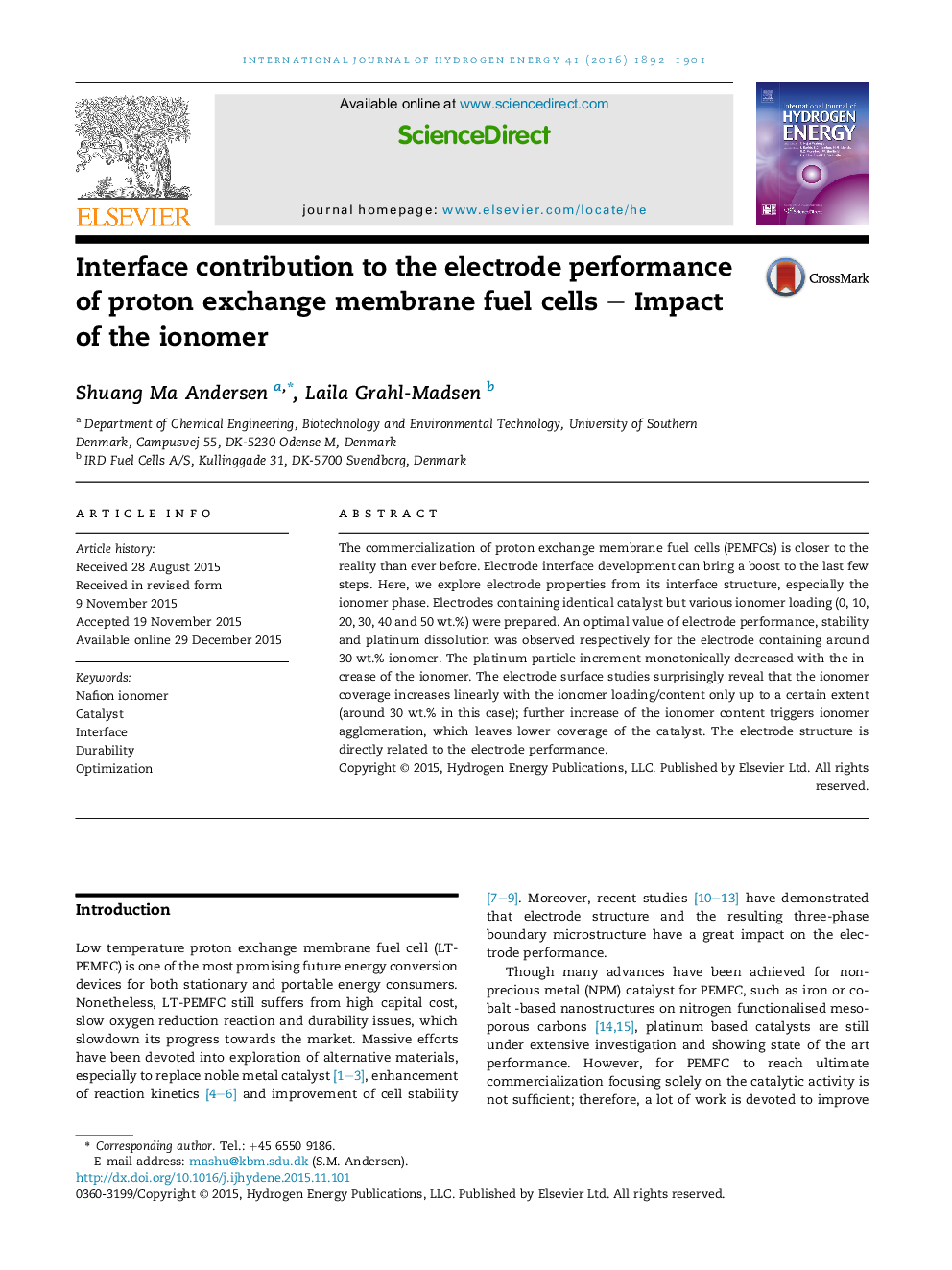| Article ID | Journal | Published Year | Pages | File Type |
|---|---|---|---|---|
| 7712501 | International Journal of Hydrogen Energy | 2016 | 10 Pages |
Abstract
The commercialization of proton exchange membrane fuel cells (PEMFCs) is closer to the reality than ever before. Electrode interface development can bring a boost to the last few steps. Here, we explore electrode properties from its interface structure, especially the ionomer phase. Electrodes containing identical catalyst but various ionomer loading (0, 10, 20, 30, 40 and 50Â wt.%) were prepared. An optimal value of electrode performance, stability and platinum dissolution was observed respectively for the electrode containing around 30Â wt.% ionomer. The platinum particle increment monotonically decreased with the increase of the ionomer. The electrode surface studies surprisingly reveal that the ionomer coverage increases linearly with the ionomer loading/content only up to a certain extent (around 30Â wt.% in this case); further increase of the ionomer content triggers ionomer agglomeration, which leaves lower coverage of the catalyst. The electrode structure is directly related to the electrode performance.
Related Topics
Physical Sciences and Engineering
Chemistry
Electrochemistry
Authors
Shuang Ma Andersen, Laila Grahl-Madsen,
